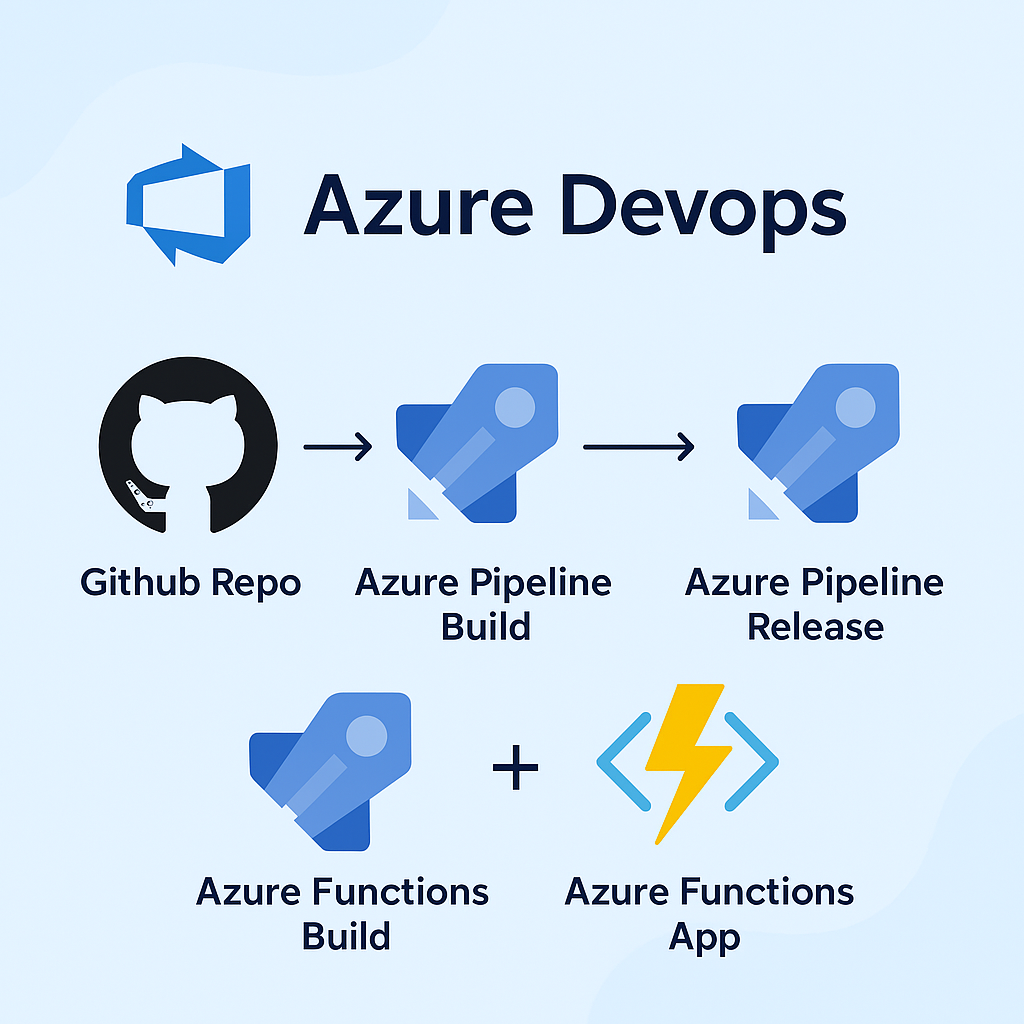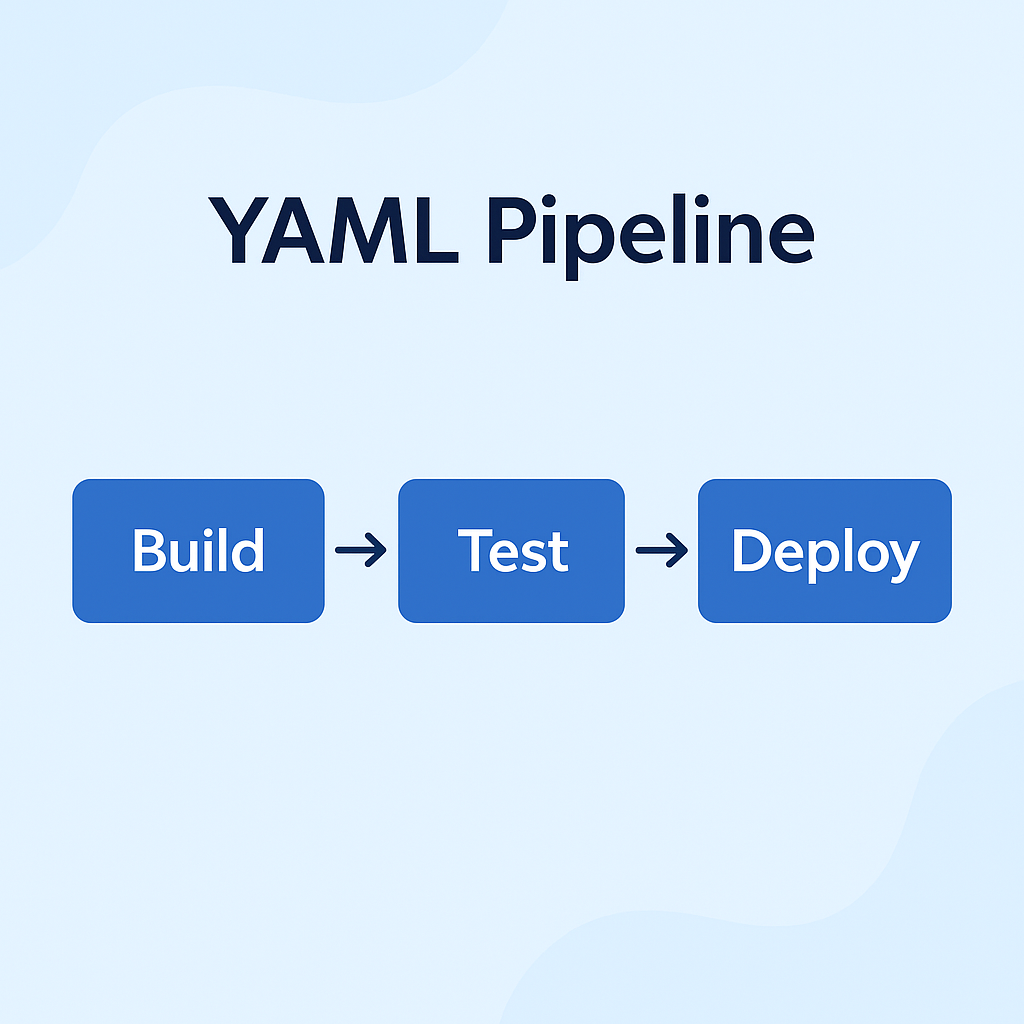Creating & Configuring Build Pipelines
Build pipelines in Azure DevOps automate your software's compile, test, and package process — ensuring every code change moves smoothly and reliably toward deployment.
What is a Build Pipeline?
A Build Pipeline is an automated workflow that takes your source code and transforms it into a deployable application. This includes compiling the code, running automated tests, and creating artifacts that can be deployed to various environments.
- Checks code quality by running automated builds and tests
- Produces versioned build artifacts for repeatable deployments
- Reduces manual steps and human error
- Speeds up software delivery through continuous automation

Build pipeline flow from code to artifacts
Typical Build Pipeline Workflow
- Developer pushes code to Azure Repos (or GitHub)
- Pipeline is automatically triggered to start the build
- Source code is compiled and unit tests are executed
- Build artifacts are created and stored
- Status is reported and any issues are flagged instantly
How to Create a Build Pipeline in Azure DevOps
Creating your first build pipeline is a straightforward process:
- Open your project in Azure DevOps.
- Navigate to Pipelines in the left menu.
- Click New Pipeline and select your code repository.
- Choose between a starter template or YAML configuration.
- Add tasks for building, testing, and packaging your application.
- Save and Run the pipeline to see it in action.
Configuring Your Pipeline
- Use YAML to version-control your pipeline alongside code
- Add build triggers to run the pipeline on every push
- Include test tasks to verify code stability
- Use caching to speed up build performance

Pipeline defined using YAML configuration
Best Practices for Build Pipelines
- Automate everything: From builds to tests to deployments
- Run tests early: Catch bugs before code reaches production
- Keep pipelines fast: Optimize steps and use build caching
- Clean up artifacts: Use retention policies to manage storage
- Monitor builds: Use analytics to detect slowdowns or failures
Conclusion
Build pipelines are a critical part of the CI/CD process. They help your team automate builds, run tests consistently, and generate reliable outputs that are ready for deployment. Whether you’re building web apps, APIs, or microservices — pipelines keep everything moving smoothly.
Next up, we'll compare YAML vs Classic Pipelines so you can choose the best approach for your team.